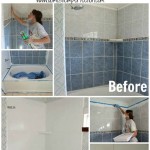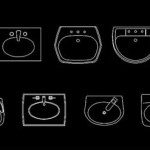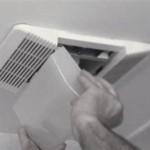How To Remove a Vanity From a Bathroom
Removing a bathroom vanity can be a necessary step in various home improvement projects, such as remodeling, replacing an outdated unit, or repairing underlying plumbing. This task, while seemingly straightforward, requires careful planning and execution to prevent damage to the bathroom's infrastructure, including plumbing, flooring, and walls. A systematic approach, combined with the appropriate tools and safety precautions, is crucial for a successful vanity removal.
Before commencing the removal process, it is essential to thoroughly assess the existing vanity and its connections to the bathroom. This involves identifying the types of plumbing connections (water supply lines and drainpipe), the method of attachment to the wall and floor, and the presence of any obstructions or potential hazards. A detailed understanding of these factors will inform the subsequent steps and help anticipate potential challenges.
Preparation and Safety
Prioritizing safety is paramount before initiating any demolition or plumbing work. The first step is to shut off the water supply to the bathroom. Typically, this can be achieved by turning off the shut-off valves located beneath the vanity. If these valves are absent or malfunctioning, the main water supply to the house must be shut off. Following this, open the bathroom faucets to relieve any residual pressure in the pipes. It is also recommended to cover the drain opening to prevent small tools or debris from falling into the drainpipe.
Appropriate safety gear should be worn throughout the removal process. This includes safety glasses to protect the eyes from dust and debris, gloves to safeguard the hands, and a dust mask to prevent inhalation of airborne particles, especially in older homes where lead paint or asbestos may be present. Additionally, ensuring adequate ventilation in the bathroom is important to minimize exposure to potentially harmful substances.
Gathering the necessary tools is a crucial preparatory step. Essential tools include: adjustable wrenches (for disconnecting plumbing), a basin wrench (for reaching difficult-to-access nuts on the faucet), a screwdriver set (both flathead and Phillips head), a utility knife (for cutting caulk or sealant), a pry bar and hammer (for detaching the vanity from the wall or floor), a level (to check for plumb), rags or towels (for cleaning up spills), and a bucket or container (to catch any remaining water in the pipes). Having these tools readily available will streamline the removal process and minimize delays.
Disconnecting Plumbing Connections
The next step involves disconnecting the plumbing connections to the vanity. This process begins with the water supply lines. Using an adjustable wrench, carefully loosen the nuts connecting the supply lines to the faucet tailpieces. It is important to have a bucket or container positioned beneath the connections to catch any water remaining in the pipes. Once the nuts are loosened, gently detach the supply lines from the faucet tailpieces. If the supply lines are corroded or difficult to remove, penetrating oil can be applied to the connections to help loosen them.
After disconnecting the water supply lines, attention should be turned to the drainpipe. The drainpipe is typically connected to the sink drain with a P-trap, which prevents sewer gases from entering the bathroom. Loosen the slip nuts connecting the P-trap to the sink drain and the drainpipe in the wall. Again, a bucket should be placed underneath to catch any remaining water in the P-trap. Once the slip nuts are loosened, carefully detach the P-trap from the sink drain and the drainpipe. It is advisable to inspect the P-trap for any signs of damage or corrosion and replace it if necessary.
If the vanity has a pop-up drain stopper, it will need to be disconnected as well. Locate the linkage connecting the pop-up stopper to the drain lever. Typically, this linkage can be disconnected by loosening a small screw or clip. Once the linkage is disconnected, the pop-up stopper can be removed from the sink drain.
Removing the Vanity Structure
With the plumbing connections disconnected, the next phase involves detaching the vanity structure from the wall and floor. Most vanities are secured to the wall with screws or nails driven through the back panel into the wall studs. Locate these fasteners and remove them using a screwdriver or drill. If the fasteners are difficult to remove, penetrating oil can be applied to loosen them. In some cases, the vanity may be glued to the wall with construction adhesive. A utility knife can be used to carefully cut through the adhesive along the edges of the vanity.
Once the fasteners have been removed, gently pry the vanity away from the wall using a pry bar and hammer. Exercise caution to avoid damaging the wall surface. If the vanity is difficult to remove, check for any remaining fasteners or adhesive. Once the vanity is detached from the wall, carefully lift it or slide it out of its position. If the vanity is heavy, it may be necessary to enlist the help of another person.
Some vanities may also be secured to the floor with screws or nails. Locate these fasteners and remove them using a screwdriver or drill. If the fasteners are concealed beneath the vanity, it may be necessary to use a flashlight to locate them. Once the fasteners have been removed, gently lift the vanity off the floor. If the vanity is glued to the floor, a utility knife can be used to carefully cut through the adhesive along the edges of the vanity.
Post-Removal Procedures
After the vanity has been removed, several post-removal procedures are necessary to prepare the bathroom for the next phase of the project. The first step is to inspect the wall and floor for any damage caused by the vanity removal. Repair any damaged drywall or flooring as needed. Fill any screw holes or nail holes with spackle or wood filler. Sand the repaired areas smooth and prime them before painting or applying a new finish.
The next step is to clean up any debris or spills that occurred during the removal process. Sweep or vacuum the floor to remove any dust, dirt, or debris. Wipe down the wall and floor surfaces with a damp cloth to remove any residue. Dispose of any old plumbing fixtures, fasteners, or other materials in a responsible manner.
Finally, it is essential to cap off any open plumbing lines to prevent leaks or sewer gas from entering the bathroom. Use pipe caps and Teflon tape to seal off the water supply lines. Use a drain plug or cap to seal off the drainpipe. Ensure that all caps and plugs are securely tightened to prevent any leaks. This is particularly important if the bathroom will be out of use for an extended period.
Disposing of the old vanity unit responsibly is also an important consideration. Depending on the material and condition of the vanity, options include donating it to a charitable organization, selling it online or at a consignment shop, or discarding it at a local landfill. Check local regulations for proper disposal methods, especially if the vanity contains hazardous materials.

How To Remove A Bathroom Vanity Budget Dumpster

How To Remove A Bathroom Vanity Remodel

5 Easy Steps On How To Remove A Bathroom Vanity Diy Guide

How To Remove Bathroom Vanity Cabinet Step By Guide

How To Replace A Bathroom Vanity The Handyman
:max_bytes(150000):strip_icc()/7_remove-vanity-top-56a4a26d3df78cf772835b2d.jpg?strip=all)
How To Remove A Bathroom Vanity Cabinet

How To Remove Replace A Vanity Top Easy Bathroom Sink Remodel

How To Install A Bathroom Vanity And Sink


Diy How To Remove And Install A Bathroom Vanity
Related Posts







